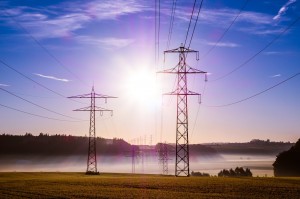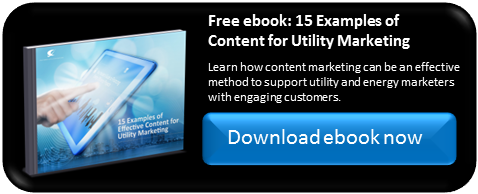

J&C Blog
Find all the latest marketing trends on the J&C Blog.

Find all the latest marketing trends on the J&C Blog.

Do different types of content lead to different types of engagement? You bet they do. Not every piece of content is created equal, and they shouldn’t be. 
A well-rounded program includes many different types of content marketing. By diversifying the makeup of a digital marketing strategy with varying types of content, utilities will see a better return on investment and meet, or even surpass, benchmarks.
Different types of content marketing enable utilities to engage with customers at various points in their overall brand experience. As we’ve covered before, approximately 50% of consumers pay their bills online, according to Market Place. As a result, that means 50% of your current customer base is regularly accessing your website and interacting with your brand. Many companies would kill for that rate of engagement.
Even if we assumed, which would be wrong, that the only time customers are on a utility website is for paying their bills, that leaves plenty of opportunity to further engage them.
Creating content in a wide variety of styles and media allows customers at different places in the engagement process to identify with the brand in the way that most suits them. From those breezing by the utility home page to pay their bills to those actively researching energy saving opportunities, each customer can be engaged with the right type of content marketing.
When it comes to utility marketing goals, the right type of content leveraged to meet customers’ needs at the right time is the ingredient for success. Keep residential and commercial customers engaged with your brand by offering relevant information in one of these five types of content marketing.
1. News Blog Posts – The energy sector is a fast-paced industry and utilities are at the forefront of how customers learn about the latest trends, technologies and issues impacting them and their neighbors. News blog posts demonstrate that a utility has their finger on the pulse on the industry and know what developments are coming around the corner. Because news blog posts must be created at a somewhat frequent pace, they are a strong piece of content for gaining the initial attention of customers who are visiting a website to pay their utility bills or find quick bites of information about a topic. To leverage this opportunity, utilities can place strategic, topic-appropriate calls to action in and around blog posts to increase customer engagement.
2. Long-form Content – ebooks, guides and other similar long-form pieces of content represent a great opportunity for utilities. This type of content marketing will increase the length of time residential or commercial customers spend during a site visit, while also providing key insights into the needs of a particular customer demographic and an individual. Create a positive customer experience by providing downloadable content that goes in-depth about topics your customers care about. Individuals who download an ebook or guide are seeking education, and each time your landing page converts a visitor into a download, your utility has demonstrated its ability to be a trusted thought leader and source of information.
3. Infographics – Why do infographics make sense for utilities? Quite simply, some customers may respond better to visual marketing. Ninety percent of the information transmitted to the brain is visual, and those images are also processed much faster than text – 600,000 times faster. Too often, businesses flail and give up when trying to create high-quality infographics because their industry speaks a complex lingo or they are trying to cram too much information into one visual. By paring down the text and limiting the message to one facet of the entire conversation, utilities can create infographics that actively engage customers.
4. Case Studies – Case studies present a solution to a problem in a real-life scenario. As a result, commercial and residential utility customers will be able to identify with the situation and take heart from the potential solution presented in the story. The informative step-by-step type of content marketing demonstrates that a solution is possible and can be tailored to meet a customer’s individual situation. Often, case studies are pieces of content that help customers in the research stage before they ever reach out to a sales or product representative about implementing energy-efficient measures because they help them visualize the benefits of the investment.
5. Banner Ads – That’s right, your banner ads can enter the arena and work as a promotional tactic for expanding the reach of your content. This key piece of promotion allows your content to cross-pollinate different pages of a utility website and entice the attention of customers as they go about their intended business. In the content marketing matrix, promotion plays a key part in the success of a program. By advertising an ebook or popular blog posts with a banner ad, a utility can increase time spent on the website and introduce new ideas or solutions to customers who may not have previously realized the opportunities available to them, increasing overall engagement with your utility.
In conclusion, utilities already have a substantial website traffic stream. By investing in a diverse content strategy that aims to engage customers at every touch point they will be better able to meet their marketing goals. Utility marketing poses a unique set of challenges unlike any other industry, which is where we come in. Jacobs & Clevenger has experience developing strategic utility content marketing programs that succeed. Contact us today for a free content marketing assessment designed with utilities in mind to see how your marketing initiatives can thrive.
Topics: Utility Industry
303 E Wacker Drive, Suite 2030
Chicago, IL 60601
Phone: 312-894-3000
Fax: 312-894-3005